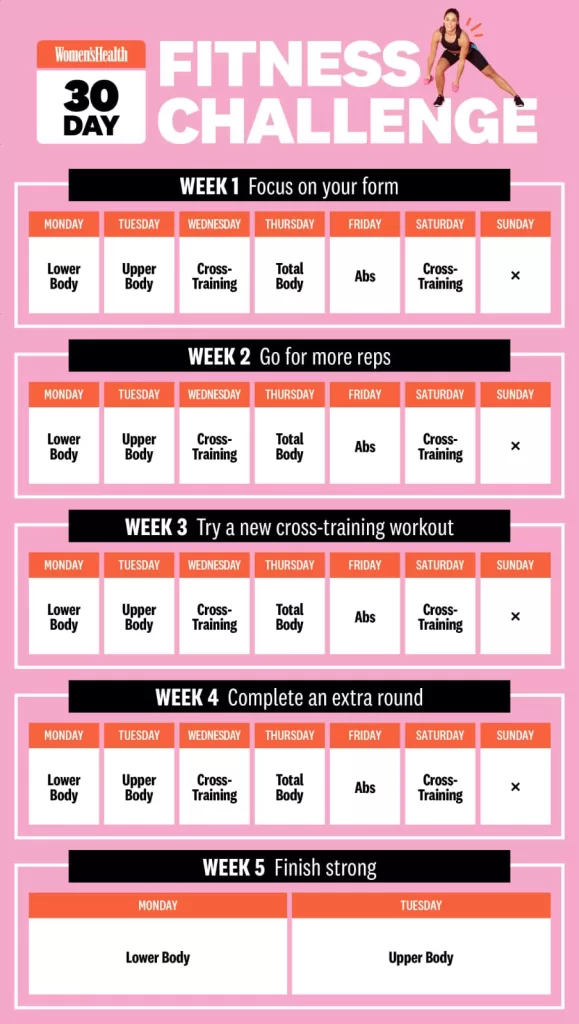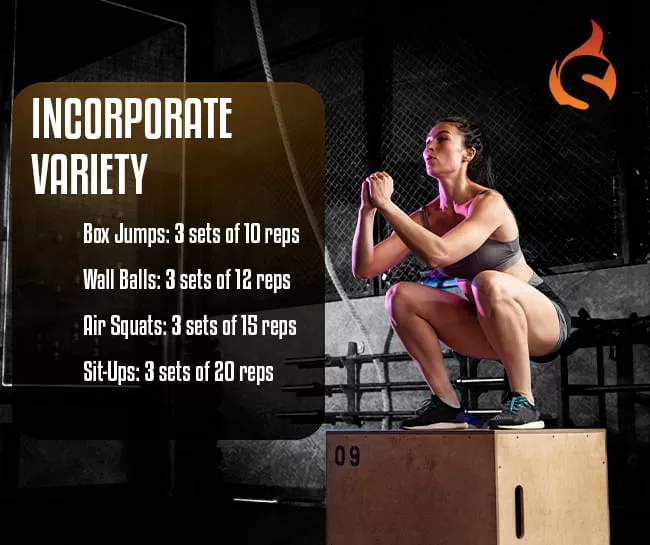In the realm of fitness, embarking on a journey towards a healthier lifestyle often begins with the formulation of a well-structured workout plan. This roadmap not only serves as a guide but also plays a pivotal role in achieving desired fitness goals efficiently. However, creating an effective workout plan involves more than just random exercises thrown together. It requires strategic thinking, understanding individual needs, and incorporating various elements to ensure comprehensive fitness development.

Workout Plan: Understanding Your Fitness Goals
Before diving headfirst into designing a workout plan, it’s crucial to define your fitness goals clearly. Whether you aim to build muscle, lose weight, improve endurance, or enhance overall fitness, having a specific objective in mind will help tailor your workouts accordingly. Understanding your goals allows you to focus on relevant exercises and track progress more effectively.

Assessing Your Current Fitness Level
Assessing your current fitness level is another crucial step in crafting a workout plan. This evaluation helps determine your starting point and allows for the establishment of realistic goals. Conducting assessments such as strength tests, endurance assessments, and flexibility measurements provides valuable insights into areas that require improvement and enables the customization of workouts to suit individual capabilities.

Incorporating Variety and Progression
A complete workout plan should include a variety of exercises targeting different muscle groups and fitness components. Incorporating variety not only prevents boredom but also ensures holistic fitness development. Furthermore, progression is key to continual improvement. Gradually increasing the intensity, duration, or complexity of exercises challenges the body and promotes ongoing advancements in fitness levels.
Balancing Cardiovascular and Strength Training
A balanced workout plan encompasses both cardiovascular and strength training elements. Cardiovascular exercises, such as running, cycling, or swimming, improve heart health, enhance endurance, and aid in calorie burning. On the other hand, strength training exercises, including weightlifting, bodyweight exercises, and resistance training, help build muscle mass, increase metabolism and enhance overall strength and function.
Scheduling Rest and Recovery
In the pursuit of fitness goals, it’s essential to recognize the significance of rest and recovery. Allowing adequate time for the body to rest and recuperate is vital for preventing overtraining, reducing the risk of injury, and optimizing performance. Incorporating rest days into your workout plan provides the body with the opportunity to repair tissues, replenish energy stores, and adapt to training stimuli.
Setting Realistic Expectations
While having ambitious fitness goals is commendable, it’s crucial to set realistic expectations and acknowledge that progress takes time. Rome can’t be built in a day, and neither can a fit, healthy body. Embrace the journey, celebrate small victories along the way, and remain patient and persistent in your pursuit of fitness excellence.
Seeking Professional Guidance
For individuals seeking guidance in crafting a personalized workout plan or those with specific fitness goals or limitations, consulting a fitness professional can be immensely beneficial. Personal trainers, exercise physiologists, or certified fitness instructors possess the expertise and knowledge to design tailored workout programs based on individual needs, abilities, and preferences.
Incorporating Flexibility and Mobility Work
In addition to cardiovascular and strength training, flexibility and mobility are essential components of a well-rounded workout plan. Incorporating exercises such as yoga, Pilates, or dynamic stretching helps improve joint range of motion, enhance posture, and reduce the risk of injury. Prioritizing flexibility and mobility work not only aids in performance improvement but also promotes overall physical well-being.
Implementing Proper Warm-Up and Cool-Down Routines
Before diving into intense exercise, it’s crucial to dedicate time to warm-up and cool-down routines. A proper warm-up prepares the body for physical activity by increasing blood flow to the muscles, raising body temperature, and improving joint flexibility. Conversely, a cool-down session helps lower heart rate, promote muscle recovery, and prevent post-exercise soreness. Including dynamic movements and stretching exercises in your warm-up and cool-down routines prime the body for activity and aids in recovery.
Monitoring Progress and Adjusting Accordingly
Monitoring progress is an integral part of any workout plan. Tracking key metrics such as strength gains, endurance improvements, body composition changes, and workout adherence provides valuable feedback on the effectiveness of your program. Regularly evaluate your performance, reassess your goals, and make adjustments to your workout plan as necessary. Whether it involves tweaking exercise selection, modifying intensity levels, or adjusting training frequency, adapting your plan ensures continued progress and prevents plateaus.
Embracing Mind-Body Connection
Incorporating mind-body practices into your workout routine fosters a deeper connection between your physical and mental well-being. Activities such as meditation, mindfulness, or breathwork help reduce stress, enhance focus, and promote overall mindfulness during exercise. Cultivating a strong mind-body connection not only enhances workout performance but also fosters a sense of inner balance and harmony.
Nurturing Proper Nutrition and Hydration
A well-designed workout plan goes hand in hand with proper nutrition and hydration. Fueling your body with the right nutrients before and after exercise optimizes performance, supports muscle recovery, and promotes overall health. Prioritize a balanced diet rich in lean proteins, complex carbohydrates, healthy fats, vitamins, and minerals to meet your body’s nutritional needs. Additionally, staying hydrated by consuming an adequate amount of water throughout the day is essential for maintaining optimal physical function and performance.
Fostering a Positive Mindset and Motivation
Lastly, fostering a positive mindset and motivation is paramount to sustaining long-term fitness success. Cultivate a mindset focused on progress, resilience, and self-compassion, rather than perfection. Setbacks and challenges are inevitable, but maintaining a positive outlook and staying motivated through intrinsic and extrinsic rewards keep you on track toward achieving your fitness goals. Surround yourself with a supportive community, celebrate achievements, and draw inspiration from your journey towards a healthier, happier you.
Conclusion
In conclusion, a well-designed workout plan is the cornerstone of achieving optimal fitness results. By understanding your fitness goals, assessing your current level, incorporating variety and progression, balancing cardiovascular and strength training, scheduling rest and recovery, setting realistic expectations, and seeking professional guidance when needed, you can embark on a journey towards improved health, vitality, and overall well-being. Remember, consistency and dedication are key,
